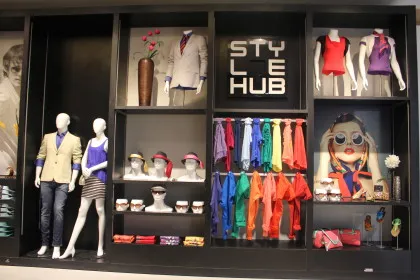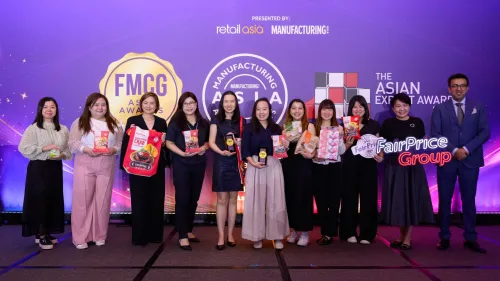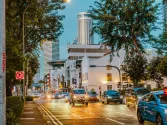
Wooing the customer at Shoppers Stop
The number of loyal customers at Shoppers Stop has increased six-fold, from 500,000 to 3.2 million all over India, because the retail store has got it right on many fronts – correct brand positioning, an effective loyalty programme, unique advertising, integrated social media and rechargeable gift cards. Shirish Nadkarni reports.
The correct pricing of in-store merchandise can be a key factor in determining a retail store’s positioning in the market. Slashing prices indiscriminately can reduce a store’s image from a high-quality, premium vendor to that of a plebian discount store – as Mumbai’s Shoppers Stop found to its dismay in 2001.
“The management had felt we could attract more customers and increase footfalls by bringing down the pricing of the merchandise. But lower prices and lower footfalls only meant lower sales and poorer profits,” says Shoppers Stop’s managing director Govind Shrikhande.
“We realised we had lost customer traffic because some key brands had moved out due to a difference of opinion with their owners, and we were trying to drive much of the same merchandise mix. We needed to look afresh at the brand mix.”
The company implemented a number of action plans in 2001, including correcting the merchandise and brand mix. From being a 100% bought-out stock company, it moved progressively towards a higher percentage of non-bought-out stock.
Today, its stock is 40% bought-out and 60% non-bought-out, a completely de-risk model. This has brought down the company’s investment in stock substantially, and sharply reduced its requirement of working capital.
“Then, in 2005, we changed our positioning in the retail pyramid, and went up one step, from ‘Premium’ to ‘Bridge-to-Luxury’,” says Shrikhande. “One of the big changes we made is that we went for ‘Beauty’. No other department store sells as many varieties of beauty aids as Shoppers Stop.”
The company also decided that it should stock non-apparel products. Over the years, it has become very strong in the Handbags and Footwear categories. It also successfully introduced a number of international brands like Tommy Hilfiger, Mustang, Mango, French Connection, Gas, Jack & Jones and Calvin Klein, and launched Mothercare in India.
Shoppers Stop did have a loyalty programme, but it was being run from the head office and was not very successful. The company asked itself the question: What is the basic advantage for the customer in the loyalty programme? It realised that merely giving points for purchases was not good enough.
“Eight years ago, we started a programme called ‘Preview of Sales’, which was meant only for loyal customers; other regular customers were not allowed to shop on that day,” says Shrikhande. “It gave our loyal customers a full choice of new stocks, and the first chance to pick up merchandise. Then we introduced ‘Golden Globe’, an additional discount of 5% for those at the highest tier.”
During the period Diwali to Christmas, that is, mid-October to end-December, when there is maximum shopping, the company also launched a gift scheme. It realised that this was a time when people shop in any case, but that there was scope to increase the amount of shopping because a gift was available for a certain quantum of purchase.
“Apart from introducing such schemes, we improved coordination between the front (store) and back (purchase) ends of our operations,” says Shrikhande. “We tried to ascertain which products our customers wanted, then brought the products into the store, and phoned customers to give them a preview of the merchandise.”
Between 2001 and 2014, the number of loyal customers has increased six-fold from 500,000 to 3.2 million all over India, and the contribution of such customers to the store chain’s sales has gone up to 72%.
“Obviously, due to increased interaction with our members, and the increased benefits they derived, customers started looking upon the store as something [they] loved and looked up to,” says Shrikhande. “Our store heads today recognise and greet a vast number of loyal customers when they come in; and that is a huge advantage.”
Shoppers Stop has also introduced ‘rechargeable’ gift cards in the form of smartcards that can be reloaded any number of times, and given to friends and family members.
These have proved to be a hit with a certain class of affluent customer who gives such a card to his children, to allow them to shop at their leisure and without parental interference; and reloads it when the ‘charge’ runs out.
No doubt there is a cost to all these programmes, but Shrikhande asserts that the benefits far outweigh the costs. Whenever there is a market slowdown, Shoppers Stop customers have remained loyal to the store.
Says Shrikhande: “So far as promotional spends are concerned, our balance of direction is more towards loyalty programmes, supported by advertising, and further supported by social media.
“We have three people in-house and two from our advertising agency who are constantly working on social media such as Facebook and Twitter, not so much to push sales as integration of the brand’s image with the customer.”
Shoppers Stop’s recent advertising campaigns have been unique, in that it has used only black-and-white advertisements that stand out above the colourful melange in the market, and most of its ads are tongue-in-cheek.
“When we changed the logo of Shoppers Stop, the underlying theme we used was: How do you use the eco-system?” says Shrikhande. “One of the ads said, ‘Wear diamonds. Attract ex-boyfriend. Recycle.’ Another said, ‘Wear short skirt. Hitchhike. Conserve fuel.’ The tag-line for all the ads in the campaign was ‘Start something new’.”
Have sales at Shoppers Stop been adversely affected by the burgeoning number of online retailers such as Myntra, Flipkart, YepMe and Amazon?
“If you see the market size, online retailers are only worth US$2 billion, while the categories in which we operate – like apparel, footwear, jewellery, and others – are worth US$75 billion,” says Shrikhande. “Organised retail in the country is huge, and worth an estimated US$600 billion.”
The Shoppers Stop chief claims that online retailers are visible only in the metropolitan centres; and it would appear that younger customers gravitate towards them. He insists that only those who seeking heavy discounts are attracted to these sites.
“But it should not be forgotten that you will never get the latest fashions on these sites; they sell merchandise that is a season or two behind the fashion trends,” he says. “You will never find the current range of apparel on these sites, because nobody can afford to discount them.”
Mature customers between the ages of 35 and 45 – who are Shoppers Stop’s base target customers – do not have much experience of online shopping.
“The enjoyment they get out of coming to a store, physically touching and examining the products cannot be replicated online,” says Shrikhande. “Nevertheless, we do realise that the younger customers are also important, and hence, we are increasing our online presence.
“We are aiming for online sales to contribute 7-8% of our total sales. Abroad, major chains like Tesco and Wal-Mart are experiencing exponential growth in their online sales, but it will take us in India some more time to reach their levels.”



















 Advertise
Advertise







